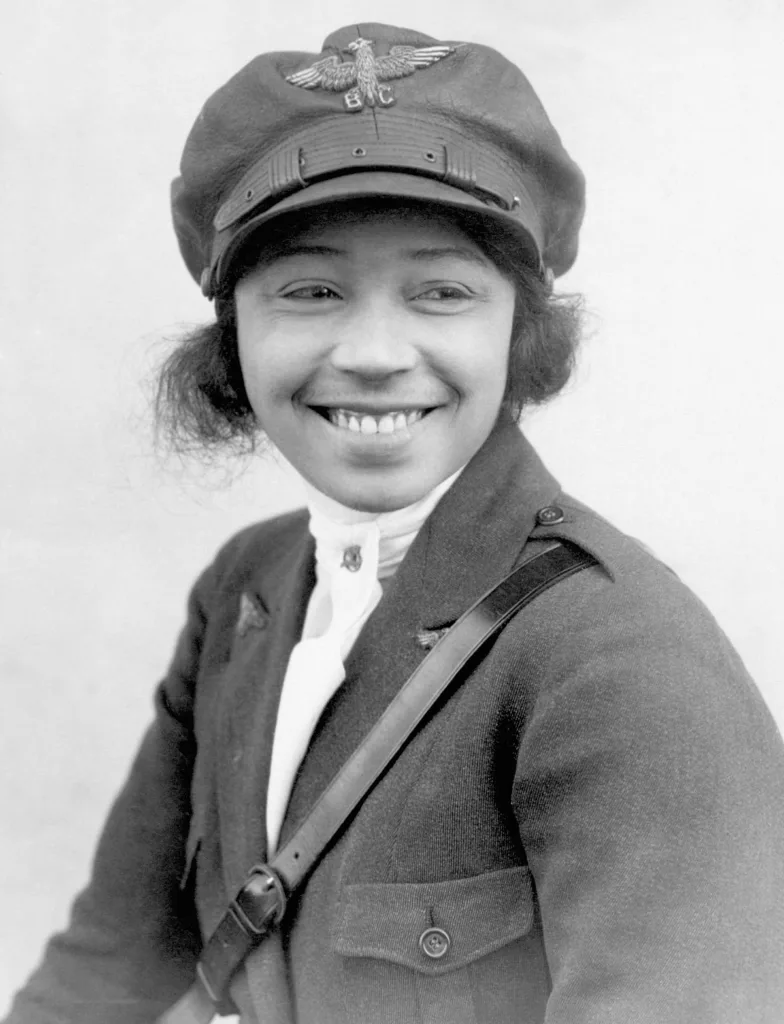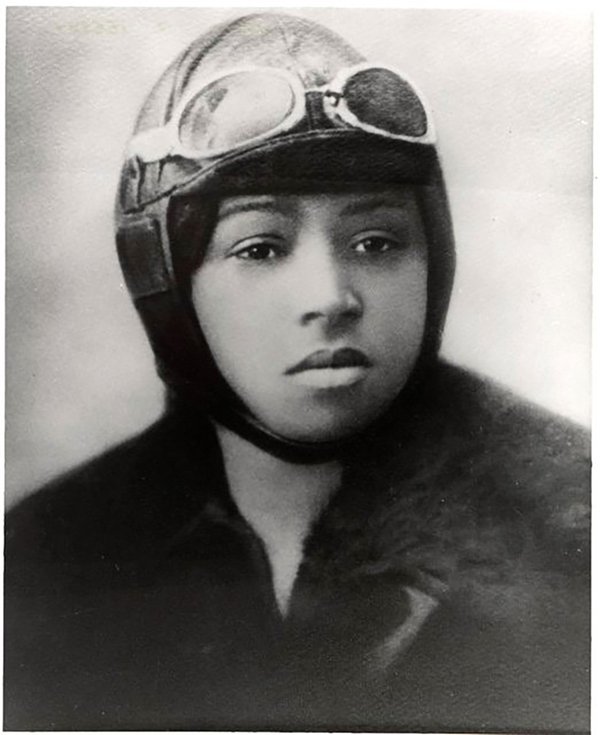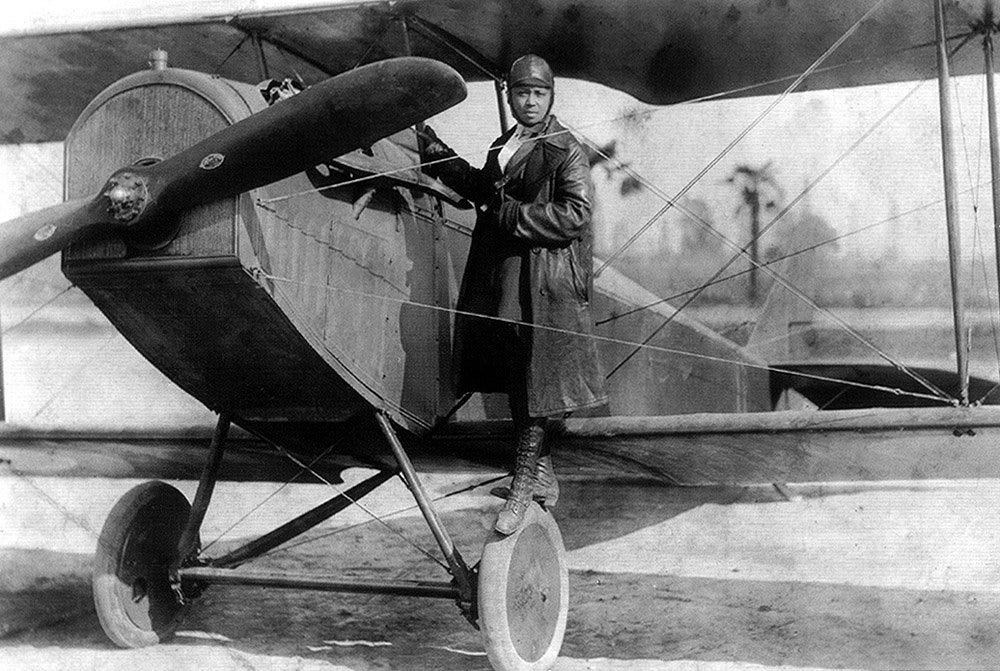Bessie Coleman was a groundbreaking aviator who paved the way for future generations of female pilots and people of color in aviation. She was born in Atlanta, Texas in 1892 and grew up in a time when women and African Americans were limited in their opportunities for education and career advancement. Despite the challenges she faced, Coleman was determined to become a pilot and pursued her dream with passion and dedication.
Coleman’s interest in aviation was sparked by stories she heard from World War I veterans who had become pilots. She saw the possibilities for adventure and freedom that flying offered and was determined to become a pilot herself. However, as an African American woman, she faced numerous obstacles in pursuing her goal. She was denied admission to flight schools in the United States because of her race and gender, so she decided to go to France to get her pilot’s license.
In 1921, Coleman went to France and enrolled in a flight school. She learned to fly in a Nieuport Type 82 biplane, a small and simple aircraft that was popular amng early aviators. She became the first African American woman to earn an international pilot’s license, and the first person of African American and Native American descent to earn a pilot’s license in the United States.
After returning to the United States, Coleman became a sensation. She performed in air shows and flying circuses, thrilling audiences with her daring stunts and aerial acrobatics. She was known for her fearlessness and determination, and became a role model for young women and people of color who aspired to careers in aviation.
Tragically, Coleman’s life was cut short when she died in a plane crash on April 30, 1926. She was flying in a Curtiss JN-4 “Jenny” biplane with her mechanic and publicity agent, William D. Wills, when the plane unexpectedly went into a spin. Coleman was not wearing a seatbelt and was thrown from the plane, falling 2,000 feet to her death. Wills also died in the crash.
Coleman’s death was a shock to the aviation community and to the public at large. She had been a trailblazer and a pioneer, and her loss was deeply felt. However, her legacy lived on, inspiring future generations of pilots and promoting diversity and inclusion in aviation.
Bessie Coleman was a remarkable woman who overcame significant obstacles to achieve her dream of becoming a pilot. She was a trailblazer and a role model, and her contributions to aviation will never be forgotten. While her death was tragic, her legacy lives on, inspiring people around the world to pursue their dreams and break down barriers.
The Distance of Bessie Coleman’s Fall
Aviator Bessie Coleman fell 2,000 feet from an airplane over the Westside of Jacksonville on April 30th, 1926. She tragically lost her life during a practice flight before a planned aerial show. The daring pilot was attempting a stunt when the accident occurred, leading to her fatal fall from a height of 2,000 feet. This incident marked the end of an accomplished career for Bessie Coleman, who had become the first African-American woman to earn a pilot’s license and was widely regarded as a pioneer in aviation.

The Death of Bessie the Brave
Bessie Coleman, also known as Queen Bess and Brave Bessie, died in a plane crash on April 30, 1926. She was only 34 years old at the time of her death. The accident occurred during a test flight for an upcoming aerial show in Jacksonville, Florida.
Coleman was in the cockpit with her mechanic and co-pilot, William Wills, when the plane unexpectedly went into a dive and then a spin. Coleman was not wearing a seatbelt and was thrown from the aircraft, falling to her death. Wills was also killed in the crash.
The cause of the accident was later determined to be a wrench that had been accidentally left in the engine compartment during maintenance. This caused the controls to jam and the plane to lose control.
Coleman’s death was a great loss to the aviation community and to the African-American and Native American communities, who saw her as a trailblazer and an inspiration. Despite her tragic ending, her pioneering role in aviation history will alwys be remembered.
Did Bessie Coleman Have Children?
Bessie Coleman, also known as “Queen Bess”, was a pioneering African-American aviator who lived from 1892 to 1926. She was the first woman of African-American and Native American descent to hold a pilot’s license. Coleman had a passion for aviation and was determined to pursue her dream of becoming a pilot, despite facing discrimination and obstacles.
However, there is no record of Bessie Coleman having any children. She dedicated most of her life to flying and advocating for desegregation in the aviation industry. She believed that anyone, regardless of thir race or gender, should have the opportunity to become a pilot and pursue their dreams.
Coleman’s legacy continues to inspire people today, particularly those who face barriers and challenges in achieving their goals. She broke down barriers and paved the way for future generations of aviators and women of color. Her determination and courage serve as a reminder of the importance of perseverance and the pursuit of one’s dreams.
The Tragic Death of Bessie Coleman
Bessie Coleman died due to a tragic accident that occurred during a rehearsal flight. On April 30, 1926, Coleman was flying as a passenger with her mechanic and publicity agent, William Wills, in a Curtiss JN-4 airplane. The purpose of the flight was to prepare for an upcoming airshow.
Coleman was not wearing a seatbelt, as airplanes at the time did not have any protection or roof. Due to this, when the plane made a sudden turn, Coleman fell out of the open cockpit and plummeted to her death. The incident occurred at an altitude of approximately 2,000 feet, and Coleman died instantly upon impact.
After Coleman fell out of the plane, Wills lost control of the aircraft and crashed a few feet away from where Coleman’s body landed. Wills also died in the crash.
Coleman’s death was a significant loss to the aviation industry and her fans. Her legacy as the first African American female pilot and her contributions to aviation history continue to inspire people aroud the world.
What Became of Bessie Smith’s Adopted Son?
Bessie Smith’s adopted son, Jack Jr., was remanded to Viola’s care by the courts but was later sent to live with his biological father. Unfortunately, Jack Jr.’s biological father did not take proper care of him and often left him hungry in the basement where he was kept. As a result, the SPCC (Society for the Prevention of Cruelty to Children) intervened and sent Jack Jr. to a home in Valhalla, New York where he could receive proper care and attention. It is unclear what happened to Jack Jr. afer he was sent to the home in Valhalla. However, it is known that Bessie Smith never adopted another child after the tragic experience with Jack Jr.

Important Facts About Bessie Coleman
Bessie Coleman was an important figure in aviation history, particularly for black women. Here are three important facts about her:
1. Bessie Coleman was the world’s first black woman to earn a pilot’s license. She earned her license in France in 1921, as it was nearly impossible for her to do so in the United States due to discrimination.
2. Bessie Coleman performed as the first African American woman to fly public in 1922. She performed in an airshow in Garden City, New York, and went on to perform in airshows throughout the United States.
3. Bessie Coleman survived her first significant flight accident two years into her career. In 1923, her plane malfunctioned during a show, and she was thrown from the plane at 2,000 feet. She survived with srious injuries, including a broken leg and ribs, but continued to fly and perform after her recovery.
Bessie Coleman was a trailblazer in aviation and an inspiration for women and people of color around the world.
The First Black Person to Fly a Plane
The first black person to fly a plane was Bessie Coleman. She was born in Atlanta, Texas in 1892 and was the 10th of 13 children. She was interested in aviation from a young age but faced many obstacles due to her race and gender.
In 1915, Coleman moved to Chicago to pursue her dream of becoming a pilot. However, no American flight school would accept her due to her race and gender. She then decided to go to France where she could receive her pilot’s license.
After completing her training in France, Coleman returned to the United States and became a successful stunt pilot, performing in air shows across the country. On June 15, 1921, she received her pilot’s license from the Federation Aeronautique Internationale, becoming the first African American, male or female, to do so.
Coleman’s legacy as a pioneer in aviation and an inspiration to future generations is stll celebrated today. She is remembered as a trailblazer who overcame discrimination and adversity to achieve her dreams.
The First Black Pilot: A Historical Overview
The first black pilot was Eugene Jacques Bullard, born on October 9, 1895. Bullard was an American, but he flew for France during World War I, becoming one of the first black military pilots in history. He was also known as the “Black Swallow of Death” for his involvement in the Lafayette Escadrille, a French aviation unit.
Bullard’s life was full of challenges, as he faced discrimination and racism both in the United States and in Europe. Despite this, he persevered and served as a fighter pilot during World War I, earning numerous awards and honors for his bravery and skill.
After the war, Bullard settled in France and became a nightclub owner, but he also played a role in World War II by serving as a spy for the French resistance. His contributions to aviation and to the fight aainst injustice have made him an important figure in history, and he is remembered today as a hero and a trailblazer.
The Pioneering Story of the First Female Black Pilot
Bessie Coleman is widely recognized as the first Black woman to earn a pilot’s license. Born in 1892 in Atlanta, Texas, Coleman grew up in poverty and faced discrimination due to her race and gender. Despite tese obstacles, she was determined to become a pilot and began taking flying lessons in France in 1920.
After earning her pilot’s license in 1921, Coleman returned to the United States and became a pioneering aviator, performing in air shows and demonstrating her skills as a stunt pilot. She also used her platform as a pilot to advocate for greater opportunities for women and people of color in aviation.
Coleman’s achievements were groundbreaking at a time when Black women faced significant barriers to success in any field. Her legacy inspired generations of Black aviators and continues to inspire people today. In recognition of her contributions to aviation history, Coleman was posthumously inducted into the National Aviation Hall of Fame in 2006.

Source: imdb.com
Death of Bessie Coleman in Plane Accident
On April 30, 1926, Bessie Coleman was rehearsing for an aerial show in Jacksonville, Florida. She was a passenger in a Curtiss JN-4 “Jenny” biplane piloted by her mechanic and publicity agent, William D. Wills. During the rehearsal, the airplane unexpectedly went into a dive followed by a spin, and Coleman was thrown from the airplane. She fell from an altitude of approximately 2,000 feet and died instantly upon impact with the ground. The cause of the accident was later determined to be a loose wrench that had becoe lodged in the airplane’s control system, causing the pilot to lose control of the aircraft. The tragedy was felt deeply by the aviation community and Coleman’s legacy as the first African American woman to become a licensed pilot continues to inspire generations of aviators.
Bessie Coleman’s Age When Her Father Left
Bessie Coleman was nine years old when her father left her and her family in 1901. Her father left in search of better opportunities for his Native American heritage in Oklahoma. As a result, the older children in the family started migrating to Chicago in search of better prospects, and Coleman arrived in the city in 1915. Her mother and the rest of the family followed suit later.
Celebrating Bessie Coleman Day
Bessie Coleman Day is celebrated on January 26th every year in the United States. This day marks the birthday of Bessie Coleman, an American aviator and the first African American woman to earn a pilot’s license. Bessie Coleman Day is a day to honor and remember her contributions to aviation and civil rights. It is celebrated in various ways, including educational events, exhibits, and aviation-related activities. The day is an opportunity to educate people about Bessie Coleman’s life and legacy and inspire future generations to pursue their dreams, just as she did.
The Plane in Which Bessie Coleman Died
Bessie Coleman, the first African American female pilot, tragically died in a plane crash on April 30, 1926. She was flying in a Curtiss JN-4D “Jenny” biplane, which was a popular training aircraft used by the US military durig World War I.
At the time of the crash, Coleman was a passenger and was not piloting the plane herself. The pilot, William Wills, was also killed in the accident. The cause of the crash was determined to be a mechanical failure, specifically a loose control lever that caused the plane to spin out of control and crash to the ground.
It is worth noting that Coleman had a previous crash in a different plane, a Curtiss JN-4, which she had purchased in 1923. This crash occurred during a test flight, and Coleman survived with minor injuries. However, she was determined to continue flying and did not let the accident deter her from pursuing her passion for aviation.
Despite her untimely death, Coleman’s legacy as a trailblazing aviator continues to inspire and influence generations.

Conclusion
Bessie Coleman was a trailblazer in the field of aviation, breaking down barriers as the first African-American woman to earn a pilot’s license. Her determination and bravery paved the way for future generations of female pilots and people of color in the aviation industry.
Sadly, Coleman’s life was cut short in a tragic airplane crash in 1926. Despite her untimely death, her legacy and impact on aviation history have continued to inspire and empower individuals from all backgrounds.
Her dedication to promoting desegregation and her vision to open a school for African-American fliers demonstrate her commitment to not only achieving her own dreams but also to helping others achieve theirs.
As we reflect on Bessie Coleman’s life and accomplishments, we must remember the importance of breaking down barriers and pursuing our passions, no matter the obstacles we may face. Her story serves as a reminder that with hard work, determination, and courage, anything is possible.
